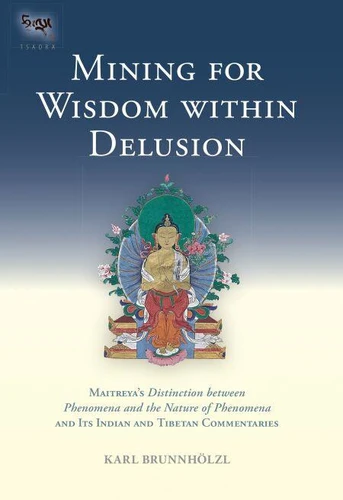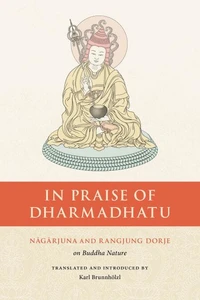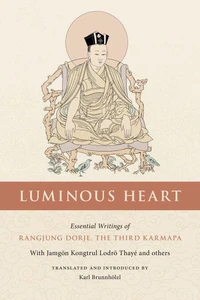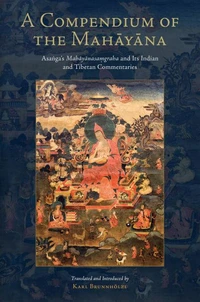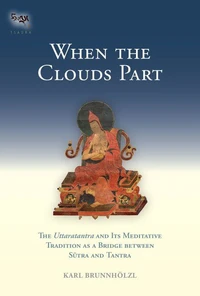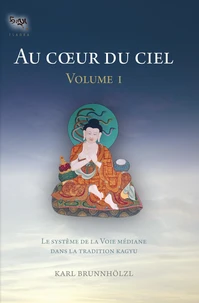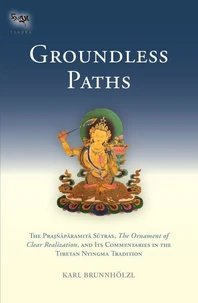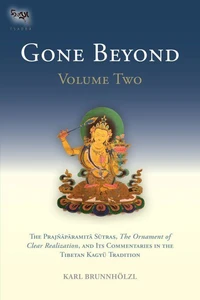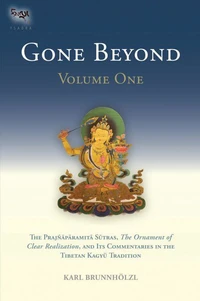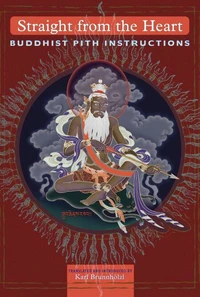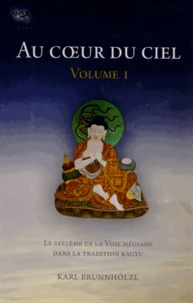Mining for Wisdom within Delusion. Maitreya's Distinction between Phenomena and the Nature of Phenomena and Its Indian and Tibetan Commentaries
Par :Formats :
Disponible dans votre compte client Decitre ou Furet du Nord dès validation de votre commande. Le format ePub protégé est :
- Compatible avec une lecture sur My Vivlio (smartphone, tablette, ordinateur)
- Compatible avec une lecture sur liseuses Vivlio
- Pour les liseuses autres que Vivlio, vous devez utiliser le logiciel Adobe Digital Edition. Non compatible avec la lecture sur les liseuses Kindle, Remarkable et Sony
- Non compatible avec un achat hors France métropolitaine
 , qui est-ce ?
, qui est-ce ?Notre partenaire de plateforme de lecture numérique où vous retrouverez l'ensemble de vos ebooks gratuitement
Pour en savoir plus sur nos ebooks, consultez notre aide en ligne ici
- Nombre de pages488
- FormatePub
- ISBN978-0-8348-2960-2
- EAN9780834829602
- Date de parution08/01/2013
- Protection num.Adobe DRM
- Taille2 Mo
- Infos supplémentairesepub
- ÉditeurSnow Lion
Résumé
Maitreya's Distinction between Phenomena and the Nature of Phenomena distinguishes the illusory phenomenal world of sa?sara produced by the confused dualistic mind from the ultimate reality that is mind's true nature. The transition from the one to the other is the process of "mining for wisdom within delusion." Maitreya's text calls this "the fundamental change, " which refers to the vanishing of delusive appearances through practicing the path, thus revealing the underlying changeless nature of these appearances.
In this context, the main part of the text consists of the most detailed explanation of nonconceptual wisdom-the primary driving force of the path as well as its ultimate result-in Buddhist literature. The introduction of the book discusses these two topics (fundamental change and nonconceptual wisdom) at length and shows how they are treated in a number of other Buddhist scriptures. The three translated commentaries, by Vasubandhu, the Third Karmapa, Rangjung Dorje, and Gö Lotsawa, as well as excerpts from all other available commentaries on Maitreya's text, put it in the larger context of the Indian Yogacara School and further clarify its main themes.
They also show how this text is not a mere scholarly document, but an essential foundation for practicing both the sutrayana and the vajrayana and thus making what it describes a living experience. The book also discusses the remaining four of the five works of Maitreya, their transmission from India to Tibet, and various views about them in the Tibetan tradition.
In this context, the main part of the text consists of the most detailed explanation of nonconceptual wisdom-the primary driving force of the path as well as its ultimate result-in Buddhist literature. The introduction of the book discusses these two topics (fundamental change and nonconceptual wisdom) at length and shows how they are treated in a number of other Buddhist scriptures. The three translated commentaries, by Vasubandhu, the Third Karmapa, Rangjung Dorje, and Gö Lotsawa, as well as excerpts from all other available commentaries on Maitreya's text, put it in the larger context of the Indian Yogacara School and further clarify its main themes.
They also show how this text is not a mere scholarly document, but an essential foundation for practicing both the sutrayana and the vajrayana and thus making what it describes a living experience. The book also discusses the remaining four of the five works of Maitreya, their transmission from India to Tibet, and various views about them in the Tibetan tradition.
Maitreya's Distinction between Phenomena and the Nature of Phenomena distinguishes the illusory phenomenal world of sa?sara produced by the confused dualistic mind from the ultimate reality that is mind's true nature. The transition from the one to the other is the process of "mining for wisdom within delusion." Maitreya's text calls this "the fundamental change, " which refers to the vanishing of delusive appearances through practicing the path, thus revealing the underlying changeless nature of these appearances.
In this context, the main part of the text consists of the most detailed explanation of nonconceptual wisdom-the primary driving force of the path as well as its ultimate result-in Buddhist literature. The introduction of the book discusses these two topics (fundamental change and nonconceptual wisdom) at length and shows how they are treated in a number of other Buddhist scriptures. The three translated commentaries, by Vasubandhu, the Third Karmapa, Rangjung Dorje, and Gö Lotsawa, as well as excerpts from all other available commentaries on Maitreya's text, put it in the larger context of the Indian Yogacara School and further clarify its main themes.
They also show how this text is not a mere scholarly document, but an essential foundation for practicing both the sutrayana and the vajrayana and thus making what it describes a living experience. The book also discusses the remaining four of the five works of Maitreya, their transmission from India to Tibet, and various views about them in the Tibetan tradition.
In this context, the main part of the text consists of the most detailed explanation of nonconceptual wisdom-the primary driving force of the path as well as its ultimate result-in Buddhist literature. The introduction of the book discusses these two topics (fundamental change and nonconceptual wisdom) at length and shows how they are treated in a number of other Buddhist scriptures. The three translated commentaries, by Vasubandhu, the Third Karmapa, Rangjung Dorje, and Gö Lotsawa, as well as excerpts from all other available commentaries on Maitreya's text, put it in the larger context of the Indian Yogacara School and further clarify its main themes.
They also show how this text is not a mere scholarly document, but an essential foundation for practicing both the sutrayana and the vajrayana and thus making what it describes a living experience. The book also discusses the remaining four of the five works of Maitreya, their transmission from India to Tibet, and various views about them in the Tibetan tradition.

